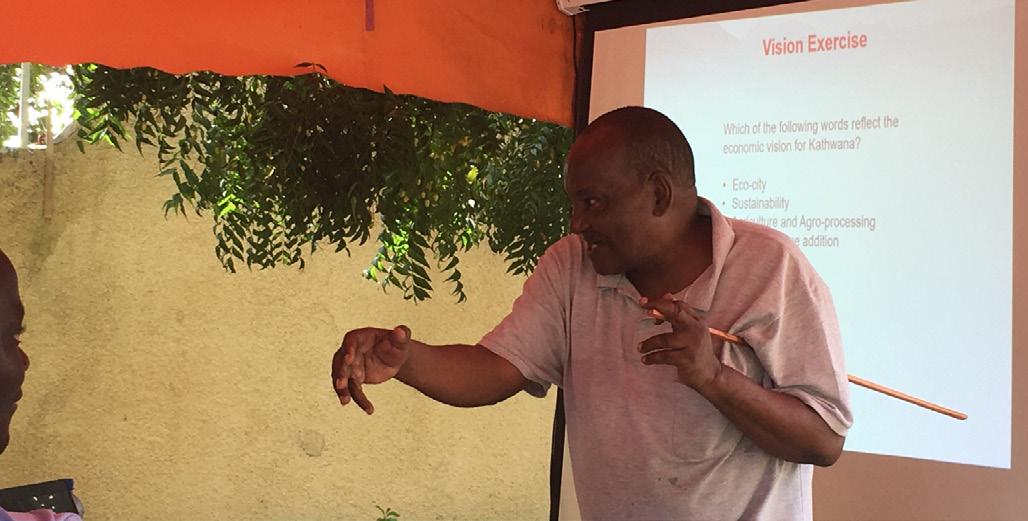
3 minute read
1.6 Structure of this report
adequate housing that allows for shielding of vulnerable groups and isolation for patients; › Redefining green spaces and the way city centres are designed for business; › Strengthening preparedness and emergency response capacity is critical.
This means better preparedness in terms of financing, service delivery and business continuity including budgeting for future crises, emergency operations centers, capacity building, drills, and human resources redeployment plans; › Prioritising policies to confront spatial, social and economic exclusion with the aim of cushioning the vulnerable in the face of another shock; › Targeting women and girls in all efforts.
It will be vital to apply intentionally gender lenses to the design of social assistance programmes and economic stimulus programmes to achieve greater opportunities, social protection and meaningful impact; › Ensuring resilient supply chains for agricultural and manufacturing sectors focusing on local inputs to ensure food security and safeguard export-oriented products; › Improving marketing efficiency through adoption of innovative processes that connect buyers and sellers. This may include adoption of technology to promote marketing and information sharing, formalising product delivery services etc; › Leveraging information technology (IT) systems to better match the required transport demand with excess supply in real time and provide travel pattern visibility, helping passenger and logistics operations become nimbler considering a quickly evolving context; › Making sure public awareness campaigns is consistently available to all in a format and language understandable to all.
1.7 Structure of this Report
Following this introduction, the report is structured as follows:
› Section 2 provides a summary of key findings from the Diagnostics
Report which forms the basis for the development of the UEP. Summaries of the demographic and economic profiles and the infrastructure and environmental assessments are presented. The section details the key challenges and drivers for growth, identifying Kathwana’s key sectors; › Section 3 introduces the Kathwana’s development concept and how it aligns to existing plans. It is supported by the economic vision developed by the local stakeholders; › Section 4 set outs the Urban Economic
Development Plan. Each of the three key sectors is presented with a summary of its SWOT analysis and a Sector Action
Plan. The identified Value Chain projects are then set out in detail; › Section 5 outlines the Development
Framework and supporting climate resilient infrastructure projects that have been identified for enabling urban and economic growth within Kathwana; › Section 6 presents a range of implementation considerations to support the next stages of the
SUED Programme. The report is supported by a series of appendices, in which: › Appendix A - Kathwana
Diagnostic Report
The purpose of the report is to assess the current position of the economy and state of infrastructure, alongside the regional, national and international context, before the consideration of emerging economic growth opportunities and infrastructure needs; › Appendix B - Technical Briefing Paper
It captures the process followed from identification to assessment of growth opportunities for Kathwana and provides recommendations on those with the greatest potential to maximise benefits and be developed further. The contents of this report will form the backbone of the UEP; › Appendix C - Kathwana Social
Inclusion Study
This study was a key part of the diagnostic process and engaged with special interest groups through interviews and focus group discussions.
The study identified the groups that are excluded in socio-economic activities in Kathwana and explored how and why they are excluded. The Study made a series of recommendations for the
SUED programme to ensure inclusion and to address the multiple barriers (communication, physical, attitudinal and organisational) that these groups face; › Appendix D - Climate Vulnerability
Assessment
Has been undertaken to outline the climate vulnerability context for the selected infrastructure projects to be developed in Kathwana. The
Climate Vulnerability Assessment will complement associated pre-feasibility and feasibility study.





